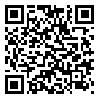دوره 12، شماره 4 - ( 12-1403 )
جلد 12 شماره 4 صفحات 39-28 |
برگشت به فهرست نسخه ها
Download citation:
BibTeX | RIS | EndNote | Medlars | ProCite | Reference Manager | RefWorks
Send citation to:



BibTeX | RIS | EndNote | Medlars | ProCite | Reference Manager | RefWorks
Send citation to:
M H, L M, M K, Z D. Designing breast disease atlas software: student perspectives and satisfaction. jmsthums 2025; 12 (4) :28-39
URL: http://jms.thums.ac.ir/article-1-1345-fa.html
URL: http://jms.thums.ac.ir/article-1-1345-fa.html
حق بین مرضیه، مصلی نژآد لیلی، کشاورز محسن، دری زهرا. طراحی نرم افزاراطلس بیماریهای پستان و بررسی دیدگاه و رضایتمندی دانشجویان پزشکی از کاربرد آن. مجله دانشگاه علوم پزشکی تربت حیدریه. 1403; 12 (4) :28-39
مرضیه حق بین1 
 ، لیلی مصلی نژآد2
، لیلی مصلی نژآد2 
 ، محسن کشاورز3
، محسن کشاورز3 
 ، زهرا دری4
، زهرا دری4 


 ، لیلی مصلی نژآد2
، لیلی مصلی نژآد2 
 ، محسن کشاورز3
، محسن کشاورز3 
 ، زهرا دری4
، زهرا دری4 

1- گروه جراحی، دانشگاه علوم پزشکی جهرم، جهرم، ایران
2- مرکز تحقیقات مؤلفههای اجتماعی، گروه توسعه آموزش پزشکی، دانشگاه علوم پزشکی جهرم، ایران
3- گروه یادگیری الکترونیکی در علوم پزشکی، دانشکده پیراپزشکی، دانشگاه علوم پزشکی تربتحیدریه، تربتحیدریه، ایران
4- کمیته توسعه آموزش دانشجویی، دانشگاه علوم پزشکی جهرم، ایران
2- مرکز تحقیقات مؤلفههای اجتماعی، گروه توسعه آموزش پزشکی، دانشگاه علوم پزشکی جهرم، ایران
3- گروه یادگیری الکترونیکی در علوم پزشکی، دانشکده پیراپزشکی، دانشگاه علوم پزشکی تربتحیدریه، تربتحیدریه، ایران
4- کمیته توسعه آموزش دانشجویی، دانشگاه علوم پزشکی جهرم، ایران
چکیده: (1277 مشاهده)
زمینه و هدف: با جایگزینی روشهای نوین آموزشی بهجای روشهای سنتی، آموزش پزشکی نیز نیازمند تحول است. این مطالعه باهدف طراحی نرمافزار آموزشی تعاملی اطلس بیماریهای پستان برای دانشجویان پزشکی و بررسی دیدگاه و رضایت آنها انجام شد.
روش ها: این مطالعه از نوع طراحی و توسعه آموزشی بود که باهدف شبیهسازی موارد بالینی بر روی وب و تلفن همراه اجرا شد. اطلس طراحیشده در اختیار 2۰ دانشجوی بالینی علوم پزشکی جهرم که در حال گذراندن بخش جراحی بودند، قرار گرفت. دیدگاه دانشجویان با استفاده از یک پرسش نامه ۱۰ سؤالی در ۵ سطح لیکرت و رضایتمندی آنها در طیف ۱۰ بخشی ارزیابی شد.
نتایج: بیشترین درصد پاسخدهندگان (60 تا 80 درصد) تأثیر اپلیکیشن بر یادگیری و کاریرد آن را در سطح عالی و خوب ارزیابی کردند. 31/6 درصد دانشجویان رضایتمندی کامل از اطلس طراحیشده داشتند و 73/7 درصد از شرکتکنندگان نمره ی 7 یا بالاتر دادند. همچنین بررسی رضایتمندی افراد از کاربست اپلیکیشن نیز نشان داد که 84/3 درصد از دانشجویان از کاربست اپلیکیشن رضایت داشتند؛ بهگونهای که نمره 8 و بالاتر را انتخاب کردند.
نتیجه گیری: شبیهساز اطلس بیماریهای پستان میتواند تأثیرات مثبتی بر یادگیری و رضایت دانشجویان داشته باشد. استفاده از این اطلس تعاملی با محتوای واقعی، بهعنوان یک ابزار آموزشی مؤثر، در آموزش علوم پزشکی و سایر گروهها قابلتعمیم است.
روش ها: این مطالعه از نوع طراحی و توسعه آموزشی بود که باهدف شبیهسازی موارد بالینی بر روی وب و تلفن همراه اجرا شد. اطلس طراحیشده در اختیار 2۰ دانشجوی بالینی علوم پزشکی جهرم که در حال گذراندن بخش جراحی بودند، قرار گرفت. دیدگاه دانشجویان با استفاده از یک پرسش نامه ۱۰ سؤالی در ۵ سطح لیکرت و رضایتمندی آنها در طیف ۱۰ بخشی ارزیابی شد.
نتایج: بیشترین درصد پاسخدهندگان (60 تا 80 درصد) تأثیر اپلیکیشن بر یادگیری و کاریرد آن را در سطح عالی و خوب ارزیابی کردند. 31/6 درصد دانشجویان رضایتمندی کامل از اطلس طراحیشده داشتند و 73/7 درصد از شرکتکنندگان نمره ی 7 یا بالاتر دادند. همچنین بررسی رضایتمندی افراد از کاربست اپلیکیشن نیز نشان داد که 84/3 درصد از دانشجویان از کاربست اپلیکیشن رضایت داشتند؛ بهگونهای که نمره 8 و بالاتر را انتخاب کردند.
نتیجه گیری: شبیهساز اطلس بیماریهای پستان میتواند تأثیرات مثبتی بر یادگیری و رضایت دانشجویان داشته باشد. استفاده از این اطلس تعاملی با محتوای واقعی، بهعنوان یک ابزار آموزشی مؤثر، در آموزش علوم پزشکی و سایر گروهها قابلتعمیم است.
واژههای کلیدی: اطلس، یادگیری فعال، شبیهسازی، دانشجویان پزشکی، آموزش پزشکی، الکترونیک، بیماریهای پستان
فهرست منابع
1. Kaddoura MA. Critical thinking skills of nursing students in lecture-based teaching and case-based learning. Int J Scholarsh Teach Learn. 2011;5(2):n2 . [DOI:10.20429/ijsotl.2011.050220]
2. Cook DA, West CP. Perspective: reconsidering the focus on "outcomes research" in medical education: a cautionary note. Acad Med. 2013;88(2):162-7. [DOI:10.1097/ACM.0b013e31827c3d78]
3. Sheriff DS. Assessment methods in medical education. Ann SBV. 2023;12(1):11-3. [DOI:10.5005/jp-journals-10085-9124]
4. Ai H, Wang B, Bai J, Lu P, editors. The observable characteristics of effective teaching in professional experimental courses. In: Proceedings of the Education Management, Education Theory and Education Application; 2012. New York: Springer. [DOI:10.1007/978-3-642-24772-9_57]
5. Khajeali N, Baghaei R. A comparative study of drug knowledge and drug calculation skills among critical and general nurses. J Nurs Manag. 2013;2(4):48-55.
6. Kube ML. The relationship of nursing faculty clinical teaching behaviors to student learning: a dissertation submitted. Omaha, NE: College of Saint Mary; 2010.
7. Mduma E, Ersdal H, Svensen E, Kidanto H, Auestad B, Perlman J. Frequent brief on-site simulation training and reduction in 24-h neonatal mortality-an educational intervention study. Resuscitation. 2015;93:1-7. [DOI:10.1016/j.resuscitation.2015.04.019]
8. Brydges R, Hatala R, Zendejas B, Erwin PJ, Cook DA. Linking simulation-based educational assessments and patient-related outcomes: a systematic review and meta-analysis. Acad Med. 2015;90(2):246-56. [DOI:10.1097/ACM.0000000000000549]
9. Khanduja PK, Bould MD, Naik VN, Hladkowicz E, Boet S. The role of simulation in continuing medical education for acute care physicians: a systematic review. Crit Care Med. 2015;43(1):186-93. [DOI:10.1097/CCM.0000000000000672]
10. Ismail H, Shibani M, Zahrawi HW, Slitin AF, Alzabibi MA, Mohsen F, et al. Knowledge of breast cancer among medical students in Syrian Private University, Syria: a cross-sectional study. BMC Med Educ. 2021;21(1):251. [DOI:10.1186/s12909-021-02673-0]
11. Liao ML, Yeh CC, Lue JH, Chien CL, Hsu SH, Chang MF. Benefits of a bilingual web-based anatomy atlas for nursing students in learning anatomy. BMC Med Educ. 2022;22(1):341. [DOI:10.1186/s12909-022-03405-8]
12. Park S, Kim Y, Park S, Shin JA. The impacts of three-dimensional anatomical atlas on learning anatomy. Anat Cell Biol. 2019;52(1):76-81. [DOI:10.5115/acb.2019.52.1.76]
13. Haque A, Minhas RS, Faisal T, Naseem S, Ambreen S, Rafi A. Effect on academic performance by learning online through 3D anatomy atlas versus 2D presentations. Pak Armed Forces Med J. 2021;71(5):1700-4. [DOI:10.51253/pafmj.v71i5.6963]
14. Gloy K, Weyhe P, Nerenz E, Kaluschke M, Uslar V, Zachmann G, Weyhe D. Immersive anatomy atlas: Learning factual medical knowledge in a virtual reality environment. Anat Sci Educ. 2022;15(2):360-8. [DOI:10.1002/ase.2095]
15. Bardinet E, Bhattacharjee M, Dormont D, Pidoux B, Malandain G, Schüpbach M, Ayache N, Cornu P, Agid Y, Yelnik J. A three-dimensional histological atlas of the human basal ganglia. II. Atlas deformation strategy and evaluation in deep brain stimulation for Parkinson disease. J Neurosurg. 2009;110(2):208-19. [DOI:10.3171/2008.3.17469]
16. Guy R, Pisani HR, Rich P, Leahy C, Mandarano G, Molyneux T. Less is more: Development and evaluation of an interactive e‐atlas to support anatomy learning. Anat Sci Educ. 2015;8(2):126-32. [DOI:10.1002/ase.1461]
17. Zarif Sanaye N, et al. The impact of blended simulation and critical thinking strategies on nursing education. Nurse Education Today. 2020;85:104290.
18. Herron J. Enhancing medical education with real-world images: A review. Journal of Medical Library Resources. 2016;24(3):45-52.
19. Moduma L, et al. Simulation-based training improves obstetric care in rural hospitals. BMC Medical Education. 2019;19(1):123.
20. John N. The role of 3D simulators in medical education: A review. Medical Teacher. 2018;40(5):476-482.
21. Safdari R, et al. Development and evaluation of a CPR simulation software for medical students. Journal of Medical Systems. 2021;45(3):1-9.
22. Cook DA, et al. The effectiveness of simulation-based education: A systematic review. Medical Education. 2022;56(2):210-220.
23. Liu X, et al. Virtual and augmented reality in medical education: A meta-analysis. Journal of Medical Internet Research. 2023;25(1):e34567 .
24. Smith A, et al. The role of virtual reality in improving diagnostic skills: A randomized controlled trial. Medical Education. 2022;56(3):345-354.
25. Brown T, et al. The impact of advanced simulation technologies on medical education: A meta-analysis. Medical Teacher. 2021;43(5):567-574.
26. Johnson R, et al. Augmented reality in clinical skills training: A randomized controlled trial. BMC Medical Education. 2023;23(1):45.
27. Lee S, et al. The effectiveness of 3D simulation in surgical education: A systematic review. Journal of Surgical Education. 2022;79(3):789-800.
28. Patel K, et al. The use of virtual reality for patient education: A systematic review. Patient Education and Counseling. 2023;106:107-115.
29. Taylor M, et al. The role of simulation in improving clinical decision-making skills: A meta-analysis. Medical Education. 2022;56(4):432-440.
30. White P, et al. The impact of simulation-based training on patient outcomes: A systematic review. BMJ Simulation & Technology Enhanced Learning. 2021;7(2):89-95.
ارسال پیام به نویسنده مسئول
| بازنشر اطلاعات | |
 | این مقاله تحت شرایط Creative Commons Attribution-NonCommercial 4.0 International License قابل بازنشر است. |





